Godzilla (1954)
A movie from Japan that forever changed the film industry. There's something magical about classic films, particularly black and white movies, back when CGI didn't exist. The limitations of the technology available to filmmakers served as a curse and blessing. On the one hand, it must have been frustrating to imagine a film or scene or effect that simply wasn't possible, but on the other hand, those same limitations may have helped inspire some things about classic movies that otherwise wouldn't have existed. Case in point: Godzilla
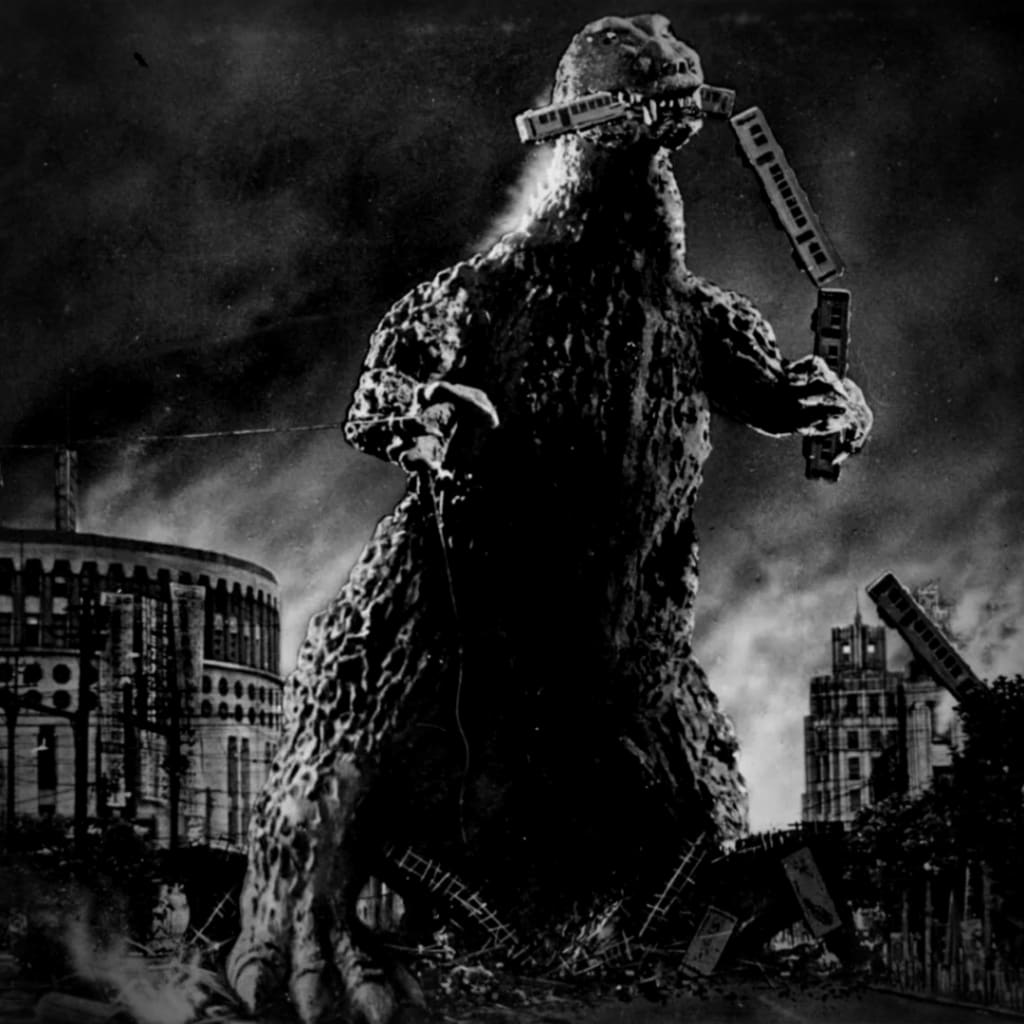
I'm sure you've heard of it. I'd be shocked if anyone with regular access to technology hasn't. Given that—what crossed your mind when you read the word "Godzilla"? Most people alive today might imagine something like a dinosaur crawling out of Tokyo Bay and senselessly ravaging the city. Now that's a pretty straightforward plot. Let's take a look at the 1954 Japanese film "Godzilla" (Japanese: ゴジラ) to see how the idea of the plot lines up with the actual plot of the movie—because it really is intriguing and might be a bit surprising.
Plot Synopsis: Godzilla Wrecks Tokyo!
The plot of Godzilla is a tale as old as time: a massive prehistoric dinosaur monster steps out of the ocean and mindlessly wrecks Tokyo. If you think that's the plot of the movie and the purpose of the monster, then you're in good company with plenty of other people who think the same thing.
Only...that's not really what the movie is about, not the original one anyway. If you've only seen the Americanized version titled "Godzilla, King Of The Monsters!" from 1956, then you're essentially correct on your plot synopsis. However, the original Japanese version, released two years earlier in 1954, had some...slight differences.
We'll come back to the American version after we take a look at the original Japanese, the OG Godzilla from 1954—because that's where the creature was invented and first hit the silver screen.
Writer: Shigeru Kayama
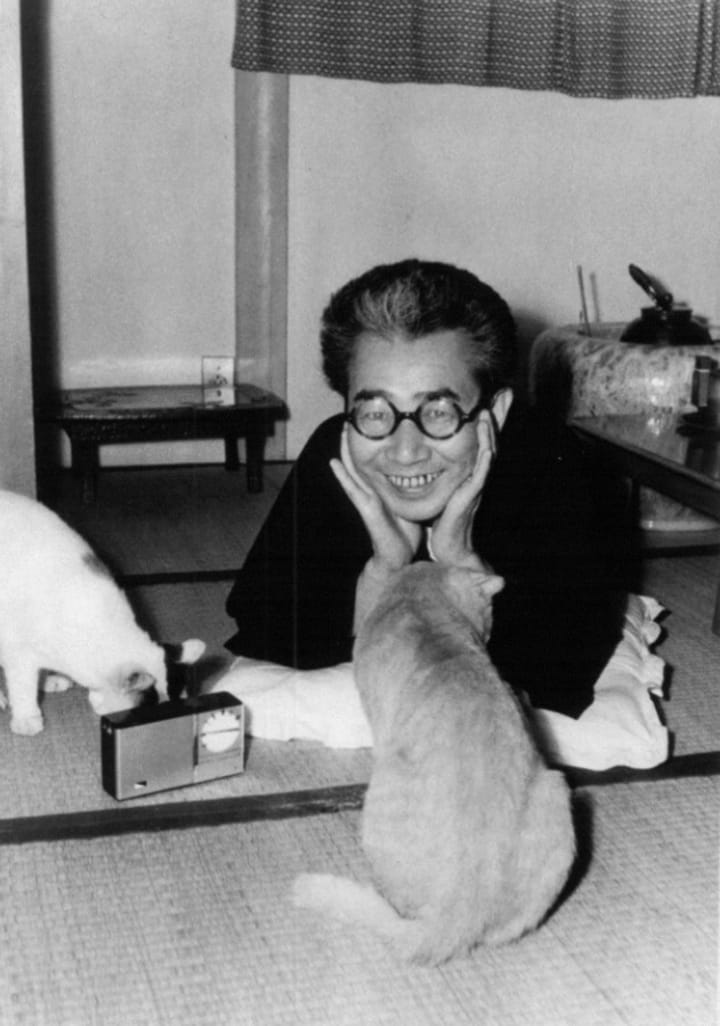
Good luck finding a Wikipedia page on Shigeru Kayama. It doesn't exist. Not in English, anyway. Luckily, he does have one in Japanese 🇯🇵. You have to wonder, though, why is that? Why doesn't the writer who helped create an absolutely iconic movie monster have their own page on Wikipedia in English? 🤨
Kayama-san became fascinated by dinosaurs from a young age and studied geology and paleontology on his own during his junior and high school years. Around 1940, he began writing poetry and, later, detective-centered mysteries. His work became quite popular, and he even had a series of short stories that followed an adventurer named Jukichi Hitomi, who you can think of as kind of a predecessor to an Indiana Jones-type character (decades before Indiana Jones existed.) Kayama-san wrote dozens of novels in various genres like horror, fantasy, science fiction, and adventure—but, sadly, I had trouble finding any of them translated into English. Obviously, that didn't stop me because 私は日本語が話せます。Hopefully, someday, someone will translate his works, though.
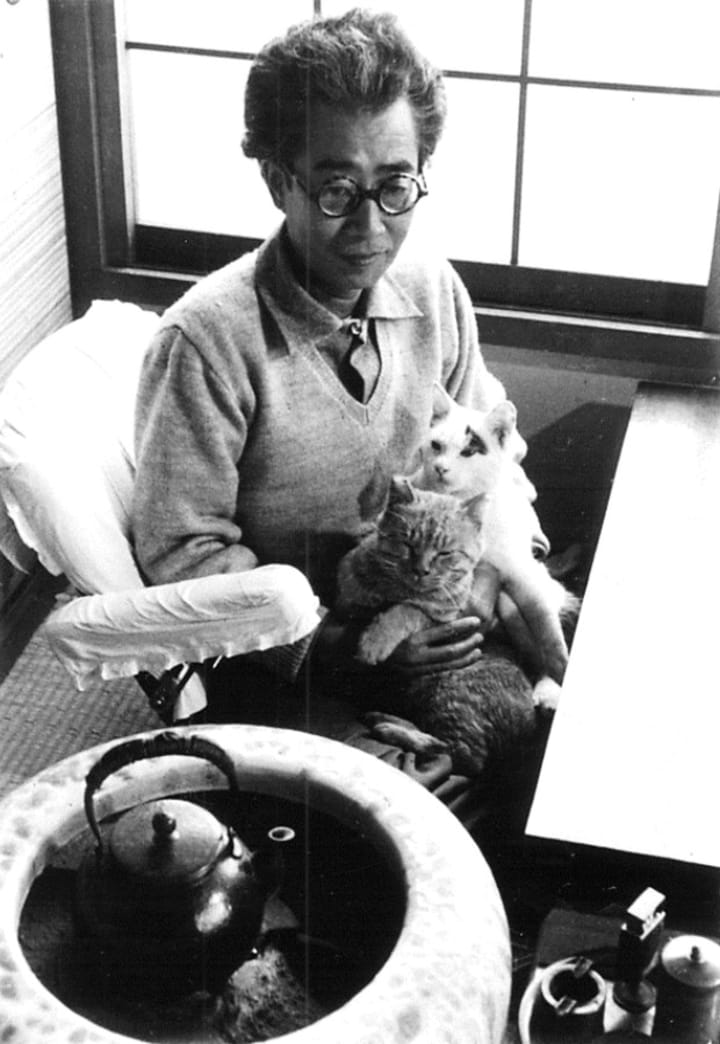
But how did Kayama-san come to write Godzilla?
A film producer named Tomoyuki Tanaka, who worked at Toho, recruited Kayama-san to help refine an idea of a giant monster into an actual story. Kayama-san wrote a story about a sea creature sinking fishing vessels.
Film director Ishirō Honda, who was working on the film idea at the time, read the sea creature story and had a specific direction he wanted to take the film. Honda-san adapted the story into the screenplay that ultimately became Godzilla, introducing his own spin on it: the monster should serve as an allegory for nuclear testing.
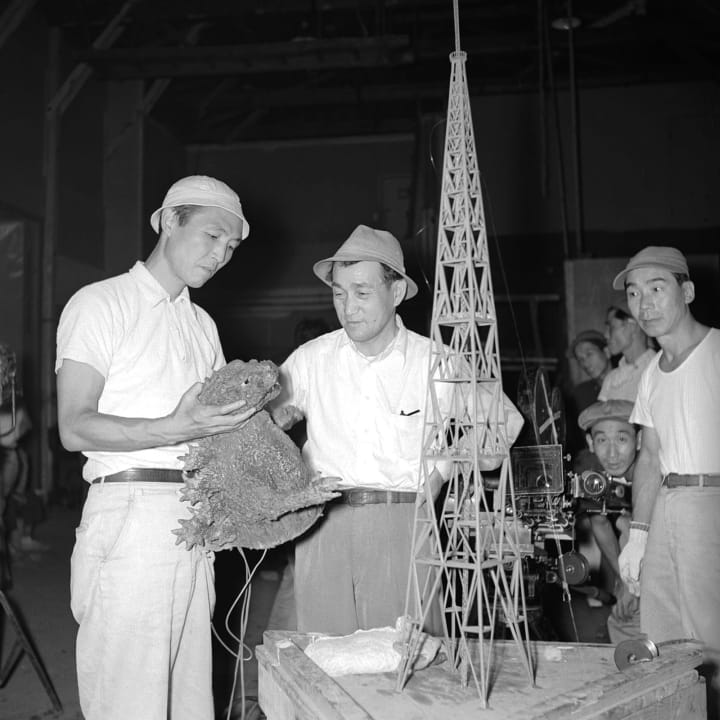
Director: Ishirō Honda
Why would Ishirō Honda want Godzilla to be an allegory for nuclear testing? To understand that, we need to take a brief look at Honda-san's life before he became a film director.
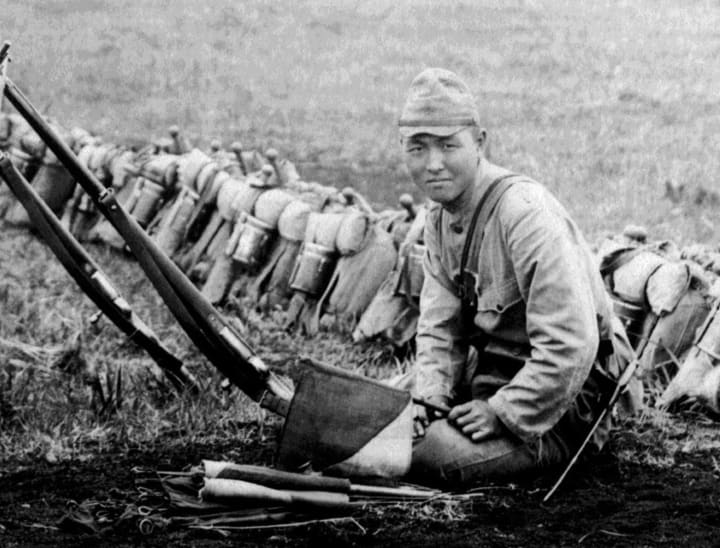
If you know the dates of World War II (September 1, 1939 – September 2, 1945), then you probably know where this is going.
At twenty-three years old, Honda-san was drafted into the Imperial Japanese Army. After being drafted into the army and prior to the official beginning of World War II, Honda-san had a commanding officer that launched a coup against the civilian government and, as a result, got sent (along with his entire regiment) to Manchukuo (Manchuria). Now, entire books have been written about this area of the world during that time in history, so here's the extremely abbreviated version: Honda-san was sent to the front lines of Japan's invasion of China. Whether or not Honda-san participated in the coup didn't matter (it is said that he was not directly involved) because the entire regiment was considered dangerous. So they were all sent under questionable pretenses to Manchukuo.
Honda-san survived his time in Manchukuo and was recalled to military service several times, for a total of three tours and six years at the front lines. He even was placed in charge of managing a "comfort station," brothel of women and girls forced into sex slavery by the Japanese Imperial Army. You can read more about this and Honda-san's life in a biography titled Ishiro Honda: A Life in Film, from Godzilla to Kurosawa.
The end of Honda-san's military career is a little unclear, but he may have been imprisoned by the Chinese National Revolutionary Army when the United States dropped atomic bombs on Japan. World War II "officially" ended on September 2, 1945, and Honda-san wasn't able to return home from the war until March 1946, after a near-death experience when a mortar shell landed right next to him but didn't detonate. He took the shell with him back home and kept it in his private study for the rest of his life.
Because of his time in the military, Honda-san suffered from nightmares about the war throughout his entire life. Those nightmares may have been the inspiration for a segment called "The Tunnel" in director Akira Kurosawa's 1990 film Dreams. The two were close friends and worked with each other on and off for decades. Some people even believe that Honda-san directed that particular segment himself, and at the very least, his wife Kimi thinks that the piece is based on his nightmares.
The original Japanese Godzilla film was released on October 27th, 1954—only 9 years after the atomic bombs dropped by the United States killed over 20,000 Japanese soldiers and over 200,000 Japanese civilians. You read those numbers correctly. Estimates of the dead range from around 129,000 to 226,000—most of which (over 90%) of the people killed were civilians.
When the 1954 film Godzilla was released, the Japanese were still dealing with nuclear fallout, horribly disfigured survivors of the atomic blasts, sickness from radiation, and the new occupation of the country by a hostile, conquering foreign military.
Think of a recently released film you've seen. What were you doing nine years ago? Nine years really isn't that much time at all. The horrors of atomic bombs were still very much on the mind of not only the Japanese but everyone else in the world. Weapons with a destructive force the world had never seen had just been used for the first time. To the majority of us alive today, the whole thing may seem so distant, like a page of a history book we read as children, but to the people living back then, nuclear terror lived in homes and schools, offices and playgrounds, and hearts and minds of nearly everyone on the planet.
Kaiju & Tokusatsu
The word "kaiju" in Japanese means, literally translated, "Strange Beast." It refers to a genre of films (and TV) featuring giant monsters. The 1954 film Godzilla is considered to be the very first kaiju film. Since the original Godzilla, there have been hundreds of kaiju seen in film and television, numbering in the thousands if you include books, comics, manga, and even board games. And, like Godzilla, many of them are metaphorical. Kaiju is a fascinating genre to explore. It falls under the umbrella genre of "tokusatsu," which, literally translated, means "special effects." The genre now spans many media types but began with live-action films that heavily used practical special effects.
A Second Look at Godzilla
"If Godzilla had been a dinosaur or some other animal, he would have been killed by just one cannonball. But if he were equal to an atomic bomb, we wouldn't know what to do. So, I took the characteristics of an atomic bomb and applied them to Godzilla."
— Ishirō Honda, director of Godzilla (1954)
On March 1st, 1954, a few months before Godzilla was made, a fishing boat was hit with radioactive fallout because the United States tested a 15-megaton hydrogen bomb at Bikini Atoll. Nine years after World War II ended, the US detonated 23 nuclear weapons at Bikini Atoll.
How did that testing go?
The first nuclear bomb missed its target, and the blast and radiation killed about a third of the lab animals held in captivity for nuclear radiation and blast force testing. The second bomb was detonated underwater, and it created a tsunami, creating an actual 94-foot high sea wave of radioactive water. Nuclear bomb number five completely vaporized three islands and tore a mile-wide crater at the bottom of the lagoon, where they set it off and hurled radioactive debris roughly equivalent to 216 Empire State Buildings exploding into the air. It was this bomb #5 that spewed radioactive debris that hit a Japanese tuna fishing boat 80 miles away (129 kilometers), contaminating all 23 crew members and killing one from radiation. The radioactive debris even hit residents of nearby Rongelap and Utirik atolls. You can read more on History.com: 7 Surprising Facts about the Nuclear Bomb Tests at Bikini Atoll.
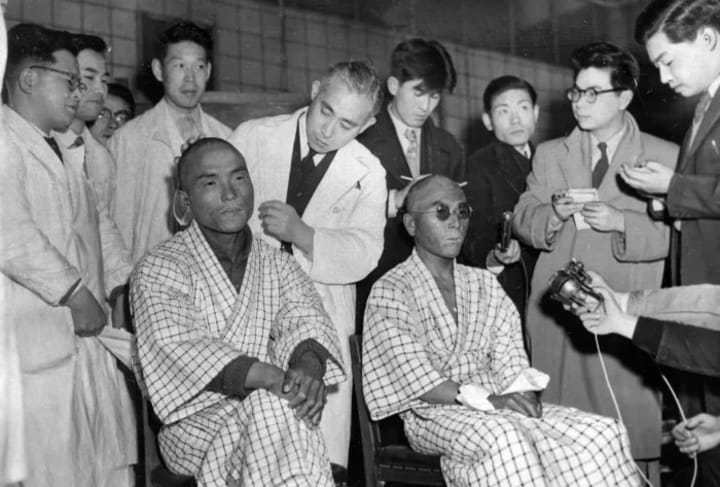
As you might imagine, the incident set off a panic in Japan.
Now, back to the 1954 Godzilla. The film opens with Godzilla destroying a Japanese tuna fishing boat off the coast of Utirik atoll. Huh. I wonder where that came from. 🧐
If you haven't seen the original Japanese film, I don't want to spoil it, but suffice to say that it won't leave you with even the slightest doubt about the allegory for nuclear testing. Actually, it even spells it out, more or less word for word. Godzilla is an ancient sea creature awakened from a deep-sea chamber by nuclear testing and becomes super-powered from nuclear contamination. The monster then proceeds to wreak havoc on Japan, with the Japanese completely unable to defend themselves. As the story progresses, a way to kill Godzilla is discovered, and the man who developed it wrestles with the philosophical, moral, and ethical issues regarding weapons of mass destruction.
The Absolute Abomination That Was the Americanized Version: Godzilla, King of the Monsters!
What do you get when you take a masterpiece of an anti-war film and hand it over to the United States?
An 80-minute long shit-show stripped of all its meaning.
"Gud-zill-uh."
— Pronunciation of "Godzilla" from the Americanized/dubbed/recut version of the film from 1956.
I challenge you to watch the original Japanese version from 1954, then the Americanized version from 1956—back to back. Or at least on the same day. Go ahead; you'll see what I'm talking about. I don't really review movies, and this isn't actually a movie review, but that 1956 film Godzilla, King of the Monsters! is one of the most horrendously glaring examples of art destruction I've ever seen in my life.
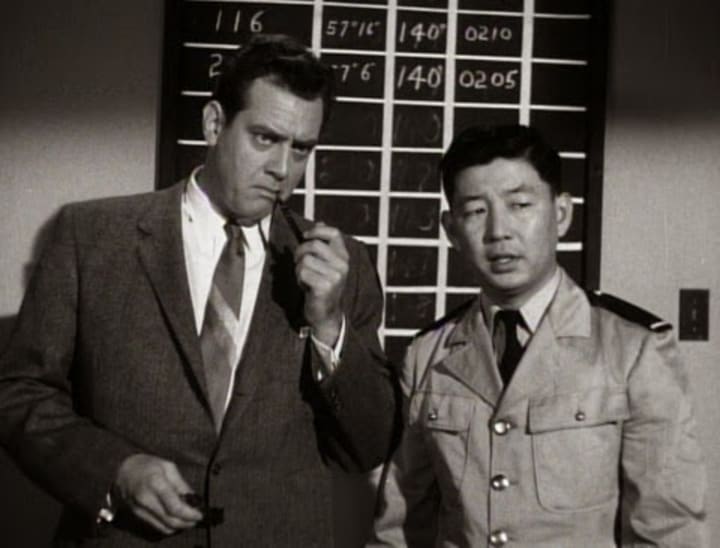
You might be thinking, "It can't be that bad..."
Oh, yes. Yes, it is that bad. Here are some supporting facts, aside from the complete removal of the allegory:
- A brand new character was created, American reporter "Steve Martin" (played by Raymond Burr). His scenes were spliced into original footage, and a new framing story was created about him stopping over in Tokyo on his way to Cairo. Steve Martin just so happens to be friends with all of the major characters from the original Japanese version.
- For no reason, Godzilla has a growth spurt, going from 50 meters (~164 feet) in the original Japanese version to 400 feet (122 meters). All the original footage is the same, by the way.
- Godzilla is woken by underwater bomb testing, but that's about it as far as nuclear anything goes in the American version.
- The film switches back and forth—with the same Japanese characters—between them speaking English with an American accent and inexplicably speaking Japanese to each other.
- Instead of simply dubbing the film, it was chopped up, and another new character incorrectly translated what the Japanese characters were saying. Body doubles were used, their backs facing the camera, for key scenes in an attempt to further convince audiences that Raymond Burr was there in the original film.
- All of the new footage was filmed in a grueling three days, and Raymond Burr was only contracted to work for one day. He was forced to work a 24-hour shift to shoot all of his scenes.
- Except for the previously mentioned waking Godzilla with testing, all references to bombs, the bombing of Nagasaki, Bikini Island nuclear testing, radioactive contamination, issues of weapons of mass destruction, and everything else with any sense of intellect and decent storytelling were utterly removed.
- I could keep going, but I don't want to waste any more time on an abomination and complete bastardization of the strong and emotionally compelling original film from Japan.
What makes the whole thing even sadder than the 80 minutes of grimacing you'll do when watching it is that Raymond Burr was a great actor. You may have encountered some of his work from Alfred Hitchcock's Rear Window or perhaps Perry Mason. He acted in a lot of film and television and happened to navigate Hollywood with an extensive career during a time that he had to hide the fact that he was gay. What the Americanized version of the Godzilla film did do, however, was show that the entirety of Japan wasn't pure evil—as the WW2 propaganda efforts made everyone believe (similar story with Germany). Thanks for that, Raymond, and also—sorry you had that 24-hour shift with no real knowledge of what you were making.

It's been nearly 70 years since Godzilla was unleashed in theaters in Japan back in 1954. That's a long time. It's a shame that it wasn't until 2004, fifty years after the Japanese release, that Godzilla was made officially available in the United States. At least you can watch it now, though, completely free and legal.
Japan is the only country in the world ravaged by nuclear bombs, and let's hope we never see them used again. There are no heroes or villains in war, no winners or losers, no right or wrong, only the dead and the living left behind.
Relevant & Related
- Watch Godzilla, The Uncut Japanese Original (Gojira) free on YouTube
- Read the Hiroshima Diary: The Journal of a Japanese Physician, August 6-September 30, 1945 by Dr. Michihiko Hachiya, who was there when the world's first atomic bomb was dropped on Hiroshima.
- Read the stories of atomic bomb survivors in To Hell and Back: The Last Train from Hiroshima (Asia/Pacific/Perspectives) by Charles Pellegrino
- Can't get enough Godzilla? You may want to check out 500 Godzilla Facts by James Egan
- Another book, A Critical History and Filmography of Toho's Godzilla Series by David Kalat, walks us through the history of how Godzilla went from black-and-white arthouse allegory to international commercial juggernaut
- And, you won't want to miss: Atomic Dreams and the Nuclear Nightmare: The Making of Godzilla (1954) by Peter Brothers, which contains rare photographs, personal interviews, and shot-for-shot descriptions of both the Japanese and American versions
- A one-hour long video, free to watch on YouTube: The History of Godzilla (1954)
- Interested in special effects? You may enjoy Hollywood's History of Faking It | The Evolution of Greenscreen Compositing
- Even more about special effects in films on The History of CGI in Film
- And, just for fun: Early CGI Was Horrifying
~
Originally published in my weekly newsletter Into Horror History—every week, I explore the history and lore of horror, from influential creators to obscure events. Cryptids, ghosts, folklore, books, music, movies, strange phenomena, urban legends, psychology, and creepy mysteries.
About the Creator
J.A. Hernandez
J.A. Hernandez enjoys horror, playing with cats, and hiding indoors away from the sun. Also, books. So many books—you wouldn't believe.
He runs a weekly newsletter called Into Horror History and writes fiction.
https://www.jahernandez.com


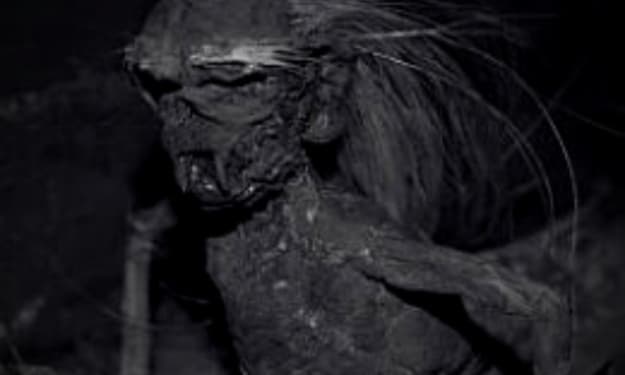



Comments
There are no comments for this story
Be the first to respond and start the conversation.